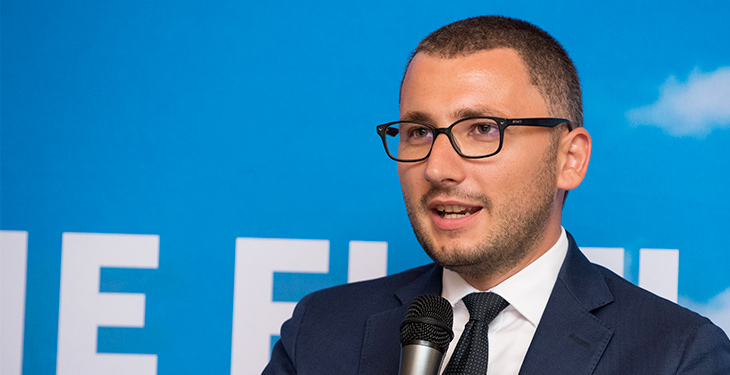“We got used to only talk about the future, but the future has come upon us. When we talk about planning – we already have the PNIESC, perhaps the most important document, perhaps more important than the energy strategy –it is time to show some ambition at the state level; we as an industry certainly have ambition”, said Mihai Balan, Policy Officer, RWEA, at the 2019 Energy Strategy Summit, an event organized by energynomics.ro…
As the official statements show that the PNIESC will be improved, wind and solar should be taken into account as they are the cheapest generation technologies.
“We understand the authorities’ concern for the consumer, within the mindframe according to which the support scheme of the past was a mistake, but – following the same logic – why do we condemn the consumer to yet another mistake – which is not to give him access to the cheapest generation technologies? Wind and solar are the cheapest and are mentioned in the Plan with only a small quota,” Balan said.
Is the system ready for new 4,000 MW in wind sector?
According to a study conducted at RWEA’s request, investors will build new wind power capacities of 3-4,000 MW by 2030, which will increase the total capacity to 6-7,000 MW, meaning that Romania’s RES share will be of 35% after investments of about 19 billion euros (estimated 22 billion euros in the official scenario). Approximately 5.5 billion euros are already available for Romania through the 10c and 10d European funding programs by 2027.
“But what about 10c and 10d? We notice that there is a tendency to give a bit to everyone, so no one would be upset. And for what? We would prefer to see a strategic approach, where we have an objective and intelligently use the funds to reach that objective. If we finance all the projects in 2021 and give a little bit to everyone, we will end up in a stalemate: we will build new generating capabilities and realize that we cannot integrate them. And we’d leave absolutely no solution to new technologies. Because in 2021 we will have no regulatory framework, no business case for storage, for hydrogen, for sector coupling. Let’s have a step-by-step approach! Let’s see what needs to be built at first – distribution, transmission, then generation capabilities, and then funding storage and hydrogen, and then what we need in order to reach the 2030 and 2050 goals. Through a linear trajectory it will be easier for us in the future,” Balan said.
He argues that the energy sector needs innovation and change, and more ambition.
“Storage technologies, demand-side management, e-mobility, virtually the technologies for integrating a larger mix of renewable energy into the grid are here and they make economic sense. We have two solutions to adopt them as soon as possible: either a support scheme or to create dedicated markets for demand-side management (as Poland has done very well), and for storage to adapt to market on demand and supply principles. That would produce better results than a support scheme.”
RWEA aims to train 5,000 miners
The RWEA official mentioned the new mining reconversion project in the Jiu Valley. “We at RWEA have found an extraordinary partner in the Ministry of Energy to make a reconversion center for several thousand miners in the Jiu Valley, giving them a chance to choose a job other than the current one, which does not seem to have a very long future. For the energy transition to succeed, it is necessary to address not only the minds, not only the economic side, but also the hearts of the people – especially in some areas that have been, for 40-50 years, the backbone of the Romanian energy sector and of the industrialization in Romania. We have a plan in this regard and I hope we’ll start it as soon as possible.”
The Tarniţa hydro power plant is not a solution for renewables
The communist-time project of the pumping hydroelectric plant from Tarniţa-Lăpuşteşti ignores the current reality and does not take into account the parameters of the wind industry. “I have heard talks about Tarniţa being presented a storage solution tailored to renewable energy, especially for the wind farms. The wind has a problem – it is located mailny in Dobrogea, and sometimes the wind does not blow for two weeks – while Tarniţa provides storage for 6-8 hours. This is not necessarily the best solution for wind sector, not on its own for sure. We have new technologies that make more economic sense now, that can create investment opportunities in Romania. It seems to me that we have reached the future, but we are still talking about old projects. I think it’s time to let each generation build their own projects,” concluded Mihai Balan.

